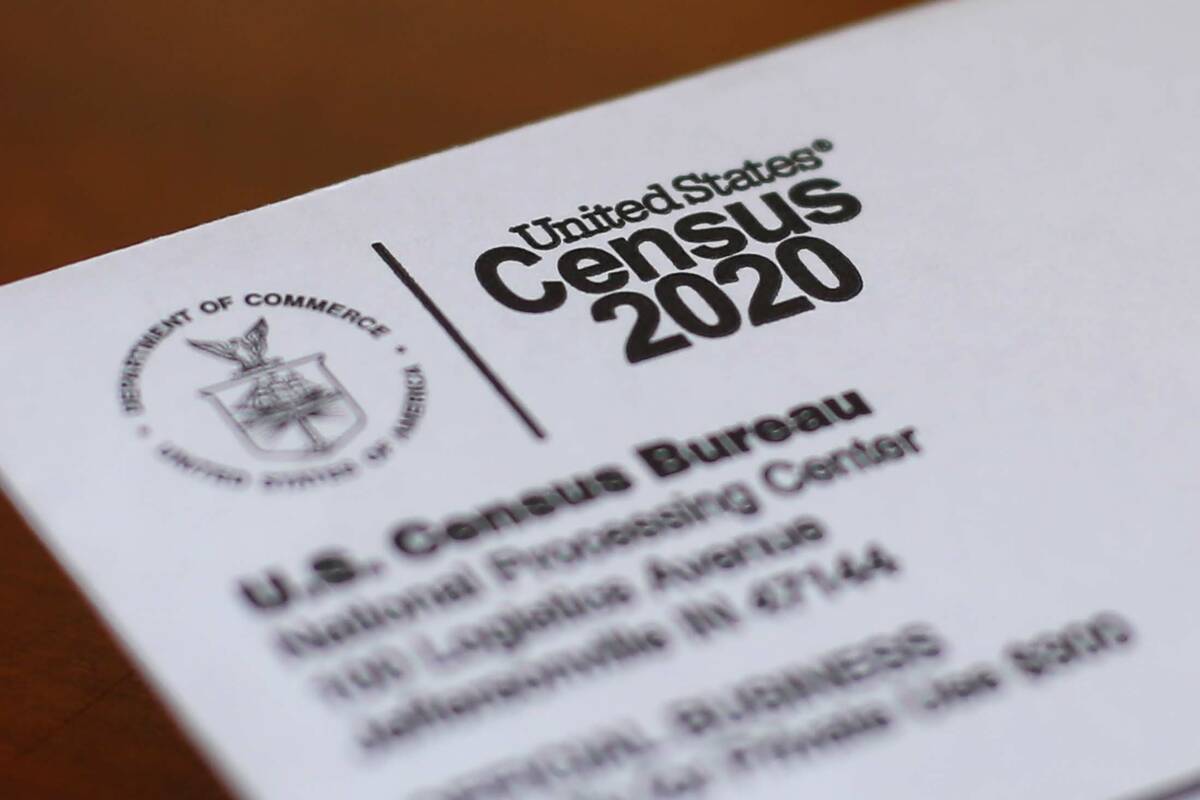In fast-growing Southern Nevada, political boundary revisions underway
Local governments in Southern Nevada are gearing up to adopt new election districts based on population data that shows the region continues to experience fast-paced growth.
The process follows the once-a-decade census, which was delayed in 2020 due to the COVID-19 pandemic, and comes ahead of elections in 2022.
Statewide redistricting, a separate process, will be taken up at a special legislative session in Carson City before the end of the year.
Henderson, which grew an estimated 23 percent since 2010, is scheduled to be the first local government in Southern Nevada to take up the issue by introducing a redistricting resolution at the city’s Oct. 5 council meeting, according to city spokeswoman Kathleen Richards.
That resolution will be referred to the council’s committee meeting two weeks later for discussion and public comment. The council can then choose to refer the matter to the regular meeting that immediately follows, where elected officials can adopt one of the draft ward maps or direct staff to create more maps, Richards said.
The city released two draft maps ahead of the Oct. 5 meeting.
Residents may provide in-person comment at the meetings or submit comments online through the city’s Contact Henderson portal. They may submit their own maps to the city clerk’s office.
Redistricting is less important in Henderson because residents can vote for representatives of any ward, regardless of where they live.
Largest governments to reveal maps soon
Las Vegas city officials are tentatively planning to introduce redistricting maps at the city council meeting on Nov. 17 before the maps can be officially adopted on Dec. 1, according to city spokesman Jace Radke.
Las Vegas’s population grew about 10 percent over the past decade, census figures show. A public viewing prior to the Nov. 17 meeting is in the works but the city has yet to finalize a date, Radke said.
Clark County, which saw a roughly 16 percent population increase with now more than 2.2 million residents, intends to host at least two public meetings before its redrawn maps are brought to the county commission, county spokesman Erik Pappa said.
The first meeting is scheduled 6 to 8 p.m. Monday inside commission chambers at the county Government Center, 500 S. Grand Central Parkway. The session will be broadcast on county television and social media channels. People may submit questions or comments to redistricting@ClarkCountyNV.gov.
Pappa noted that because it will require an ordinance to adopt the redrawn maps, the issue will come before the commission on two separate occasions, allowing the public to weigh in each time. Dates have not yet been set.
North Las Vegas also growing at fast clip
Meanwhile, North Las Vegas is working with an independent consultant to draft new district boundaries, a city spokesman said. The map will be posted online when it is ready for review.
The city’s population increased by about 21 percent since 2010, according to census figures.
The North Las Vegas City Council is expected to consider the updated ward map in November. The public will be able to provide input at in person at upcoming council meetings, though a form on the city’s website and by emailing the city clerk at cityclerk@cityofnorthlasvegas.com.
Meanwhile, the Nevada Legislature has posted links and information on its website to give residents more information about redistricting. The site even contains a link to a feature that allows members of the public to draw their own redistricting lines after registering using their email.
Contact Blake Apgar at bapgar@reviewjournal.com or 702-387-5298. Follow @blakeapgar on Twitter. Contact Shea Johnson at sjohnson@reviewjournal.com or 702-383-0272. Follow @Shea_LVRJ on Twitter.


















